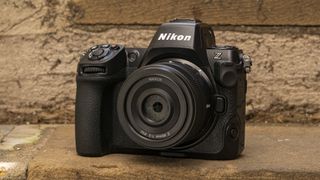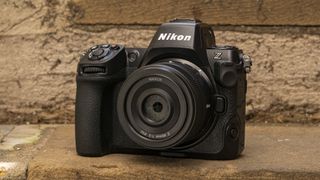It wasn’t a given, but it’s also hardly a surprise: Nikon will reportedly utilize RED camera tech in future cameras.
The camera giant recently bought out RED cameras, for a sum that has now been revealed as $85 million, but questions remain over what the fruit would be from the acquisition.
Nikon President Muneaki Tokunari has addressed the overarching question in an interview published by Nippon, who confirmed that “Nikon Corp. aims to expand its market share for cameras by utilizing the video technologies of a U.S. movie camera company acquired in spring.”
Nikon is hoping to capitalize on a recent return to form with superb mirrorless cameras such as the Nikon Z8 and a recovery in sales of its cameras with interchangeable lenses, especially in China and other emerging countries in South Asia. Tokunari pinpoints video as a key area of opportunity.
“Nikon has seen brisk demand for powerful video functions in recent years,” says Tokunari. Indeed, Nikon is now in an excellent position to boost sales, bolstered by its recent RED acquisition.
According to Tokunari, plans are also underway to build semiconductor plants across Japan. The equipment in such plants manufactures chips, aka image sensors.
Both Sony and Canon already make their own camera sensors, with Nikon being the only one of the three that don’t; instead, Sony’s sensors are used in their cameras.
New RED tech and its own in-house sensors in future cameras? It’s a promising time for Nikon fans.

What video upgrades can Nikon fans expect in the future?
Nikon’s heritage is in photography, but it’s stolen a march on rivals by acquiring RED, a big player in the professional video world.
First, we’ll most likely see improved video codecs in future Nikon cameras, even in existing models such as the Nikon Z9, via a firmware update since Nikon now owns RED’s patent on “non-debayered” raw video recording and RED’s legendary R3D raw codec (known as REDCode RAW). It’s possible that cameras such as the Z6 III, Z8, and Z9 could get 16-bit REDCode RAW video.
Combined with its own sensors, we could reasonably expect better dynamic range and color profiles for video, competing with the very best. However, we don’t know the timeline for Nikon to produce its own sensors.
And what about hardware? Developing a new Nikon Z-mount RED camera or a RED-inspired modular Nikon video camera would take years, so we’re not getting too carried away yet. However, we’ll be keeping an eye out for how the Nikon and RED collaboration unfolds, as I’m sure will Canon and Sony.
You might also like
Services Marketplace – Listings, Bookings & Reviews
